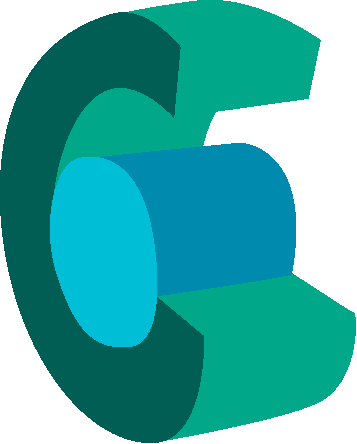Electroencephalogram (EEG) and behavioural data concerning the Go/NoGo/Conflict task
Electroencephalogram (EEG) and behavioural data (joystick) was collected from 15 healthy participants who completed a modified version of a Go/No-go task. This dataset consists of raw data, pre-processed EEG and behavioural data, along with impulsivity scores in a .csv file. The pre-processed data is in MATLAB .mat format.
Raw Data
The EEG and behavioural data (Joystick) along with trigger data was collected using a TMSi Porti amplifier with a sampling rate of 2,048Hz and is in .een format. The raw EEG files contain brain activity recorded in the first 16 channels and last 2 channels (channels 17 and 18) correspond to Joystick and Trigger information (used to identify the type of event – Go/Conflict/NoGo) respectively.
The Raw data is segregated into 2 folders- Active and Sham which is further divided into baseline and after stimulation conditions.
The main behavioural outcome is the change in NoGo errors (pre-processed folder- Figure 1C in from the article ‘Tuning the brakes – Modulatory role of transcranial random noise stimulation on inhibition,’ Brain Stimulation, 2024), comparing baseline and after-stimulation in sham and active conditions. Metadata corresponding to impulsivity scores and the change in NoGo behaviour are provided in ‘UPPS_nogo.csv’ (used for Figure 1D). The EEG data was recorded while the participants completed the task during baseline and after stimulation, and was used to calculate the spectral power (Figure 1E). The study also presents intermittent bursts from the EEG data, comparing the average burst durations at baseline and after-stimulation (Figure 1F) in sham and active stimulation conditions.
Code
All data were analysed in MATLAB (2018b) using a combination of EEGLAB, ERP LAB and FieldTrip packages.
Installation guides can be found on
https://sccn.ucsd.edu/eeglab/index.php
https://www.fieldtriptoolbox.org/download/.
The behavioural data plots use the software IOSR toolbox
https://github.com/IoSR-Surrey/MatlabToolbox
Code_figure_IC.m: This script plots the NoGo error rates in baseline and after stimulation in sham and active conditions. This script uses the mat file ‘Nogo_behav_pre_post.mat’.
We welcome researchers wishing to reuse our data to contact the creators of datasets. If you are unfamiliar with analysing the type of data we are sharing, have questions about the acquisition methodology, need additional help understanding a file format, or are interested in collaborating with us, please get in touch via email. Our current members have email addresses on our main site. The corresponding author of an associated publication, or the first or last creator of the dataset are likely to be able to assist, but in case of uncertainty on who to contact, email Ben Micklem, Research Support Manager at the MRC BNDU.

Creative Commons Attribution-ShareAlike 4.0 International (CC BY-SA 4.0)
This is a human-readable summary of (and not a substitute for) the licence.
You are free to:
Share — copy and redistribute the material in any medium or format
Adapt — remix, transform, and build upon the material for any purpose, even commercially.
This licence is acceptable for Free Cultural Works. The licensor cannot revoke these freedoms as long as you follow the license terms. Under the following terms:
Attribution — You must give appropriate credit, provide a link to the license, and indicate if changes were made. You may do so in any reasonable manner, but not in any way that suggests the licensor endorses you or your use.
ShareAlike — If you remix, transform, or build upon the material, you must distribute your contributions under the same licence as the original.
No additional restrictions — You may not apply legal terms or technological measures that legally restrict others from doing anything the licence permits.

